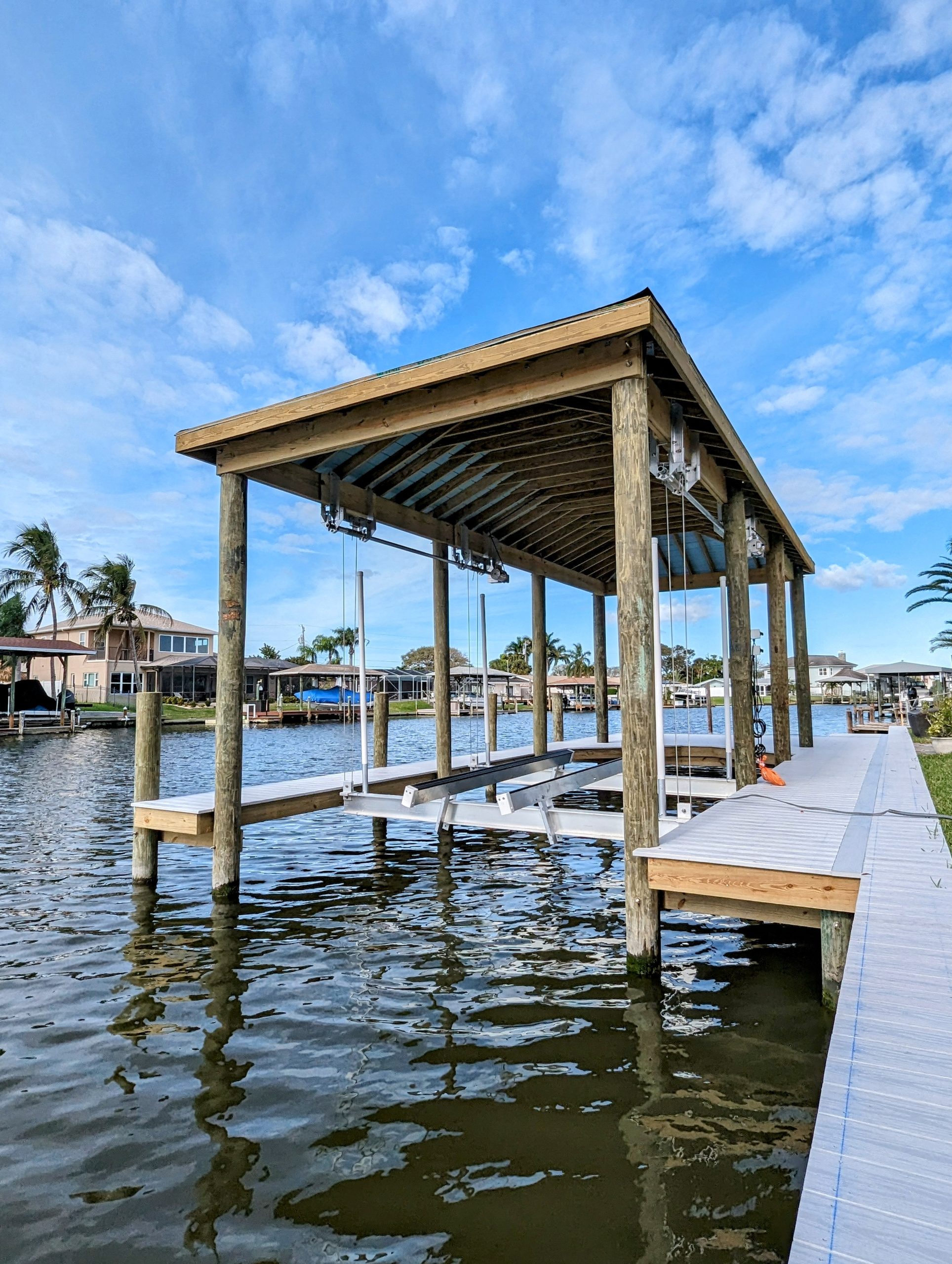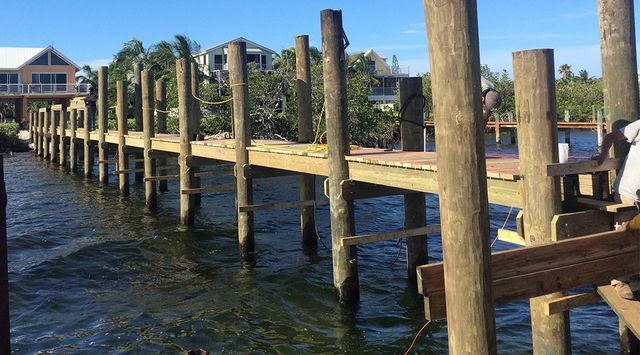Common Problems That Lead to Pricey Dock Repairs
Common Problems That Lead to Pricey Dock Repairs
Blog Article
Efficient Dock Repair Techniques: Making Certain Structural Integrity
Ensuring the architectural stability of docks through efficient fixing methods is extremely important for the durability and safety of marine facilities. This entails a multi-faceted method beginning with thorough evaluations using sophisticated modern technologies like finder tools and from another location operated automobiles (ROVs) to discover both noticeable and concealed problems. Subsequently, choosing the right repair work products, such as composite materials and corrosion-resistant alloys, is crucial for resilience. Structural support approaches, consisting of the application of cross-bracing systems and load-distribution plates, play an important function in mitigating stress and anxiety factors. The importance of these techniques becomes evident when discovering advanced repair work techniques and preventative upkeep approaches.
Examining Dock Damages
Assessing dock damage is a critical very first action in ensuring the architectural honesty and safety and security of any type of docking facility. Secret aspects to take a look at consist of the dock's foundation, pilings, decking, and equipment (Dock Repairs).
Architectural engineers or certified examiners typically do these assessments using specialized techniques and devices. For example, underwater examinations may use sonar tools or remotely ran cars (ROVs) to find submerged damages. Over water, aesthetic evaluations are enhanced by making use of dampness meters and other analysis devices to uncover underlying issues not instantly visible to the naked eye.

Deciding On Repair Work Products
Picking the suitable repair service materials is an essential action in the dock remediation procedure, one that directly affects the durability and performance of the repaired framework. Product choice must be driven by variables such as environmental problems, load-bearing requirements, and compatibility with existing dock parts. For circumstances, timber is a traditional option for docks as a result of its all-natural durability and aesthetic allure. However, picking the best type of wood, such as pressure-treated lumber or naturally rot-resistant varieties like cedar or teak wood, is vital to stand up to aquatic environments.
Along with timber, composite products are progressively prominent as a result of their resilience and low maintenance demands. Composites, usually made from a mix of plastic and timber fibers, supply excellent resistance to rot, insects, and UV damage. For steel anchors, choosing corrosion-resistant alloys such as galvanized steel or marine-grade aluminum is necessary to prevent rust and ensure architectural integrity in saline water problems.
Epoxy materials and marine-grade sealants are indispensable for fixing cracks and securing joints, offering a water-proof obstacle and enhancing the dock's general toughness. By carefully picking premium products, dock repair services can attain lasting results, thus safeguarding against future destruction and making sure risk-free, trusted usage.
Structural Support Techniques
Reliable structural reinforcement strategies are important in making certain the stability and long life of dock repair services. One essential technique includes making use of steel or composite reinforcement bars (rebar) within concrete structures. Rebar gives additional tensile toughness, stopping splits and distributing tons a lot more equally. This technique is especially reliable for anchors revealed to hefty lots or harsh environmental conditions.
Another essential technique is the application of fiber-reinforced polymers (FRP) These materials use high strength-to-weight proportions and superb resistance to corrosion, making them suitable for enhancing wooden or concrete docks. FRP can be applied in sheets or strips and adhered with epoxy materials to improve architectural integrity.
Bracing and anchoring systems also play a crucial duty in architectural reinforcement. Cross-bracing, using metal or wooden beams, can counteract side pressures, reducing guiding and activity. Securing systems, such as helical piers or driven piles, offer a stable foundation by moving lots to deeper, more steady soil layers.
Finally, the integration of load-distribution plates can help disperse weight extra uniformly across the dock's surface, mitigating local stress and anxiety factors. These strategies jointly make sure that anchors remain risk-free and robust, qualified of holding up against the rigors of their operational environment.
Advanced Repair Approaches

An additional advanced technique includes undersea welding, which permits fixings to be conducted without the requirement to dewater useful source the location. This technique is specifically useful for dealing with structural concerns in immersed dock parts, making certain marginal disturbance to procedures. Boosted welding methods, combined with robot systems, provide precision and dependability, consequently expanding the life-span of the dock.
In addition, cathodic defense systems are applied to protect against deterioration in metal dock frameworks. By making use of sacrificial anodes or satisfied existing systems, these strategies properly minimize the electrochemical procedures that cause material wear and tear.
Lastly, advanced monitoring modern technologies, such as architectural health and wellness surveillance (SHM) systems, give real-time information on the problem of dock frameworks. These systems make it possible for aggressive upkeep and prompt treatments, eventually making certain the long-term architectural honesty of the dock.
Upkeep and Avoidance
Upkeep and avoidance are essential ideas that underpin the longevity and safety of dock frameworks. Normal evaluations are extremely important, permitting early detection of damage, potential weak points, and environmental effects. An aggressive technique, entailing routine look for corrosion, rot, and architectural changes, alleviates pricey repair work and lengthens the dock's operational life.
Safety nets need to include using safety finishes to metal elements to secure against corrosion and making use of treated timber to stand up to decay. In addition, ensuring appropriate water drainage and ventilation can stop water buildup, which is a common reason for architectural degradation. Integrating top quality materials and adhering to supplier guidelines throughout construction and repair service phases also play vital navigate here roles in improving sturdiness.

Training workers in dock maintenance ideal techniques makes certain regular application of precautionary procedures. Leveraging technological advancements, such as drones for evaluations and sensors for real-time surveillance, can better improve maintenance efforts. By focusing on upkeep and prevention, dock owners can make certain architectural stability, operational safety, and cost-effective management over the dock's lifespan.
Conclusion
In conclusion, preserving the architectural integrity of marine centers demands extensive dock repair service techniques. Advanced repair work strategies, coupled with routine upkeep practices, make sure the dock remains functional and secure under diverse environmental conditions.
Making certain the structural integrity of docks with effective repair work strategies is critical for the durability and safety and security of marine centers.Selecting the suitable repair service products is a critical step in the dock repair procedure, one that directly affects the long life and performance of the fixed framework.Effective architectural support techniques are important in ensuring the stability and longevity of dock fixings. By prioritizing maintenance and avoidance, dock proprietors can make certain architectural integrity, functional safety, and cost-efficient management over the dock's life-span.
In conclusion, keeping the structural stability of marine facilities demands extensive dock repair service techniques.
Report this page